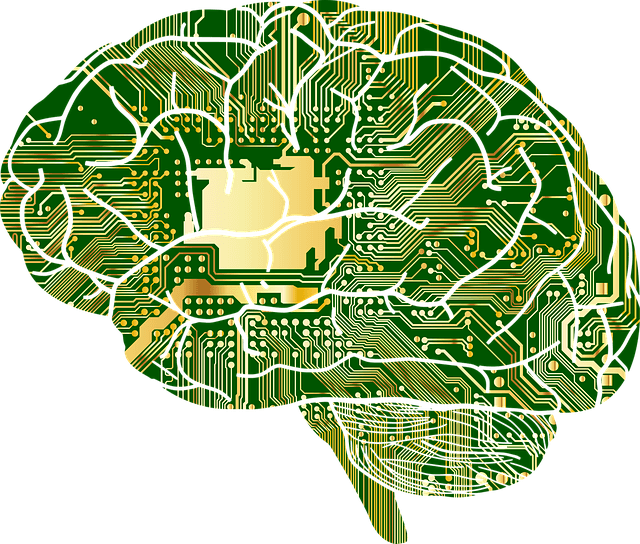Personal Fable Examples: Meaning and Impact
Discover real-life examples of personal fables and how they influence our perceptions of uniqueness and experiences.

A personal fable is a cognitive distortion in which people believe they are unique and invincible and their experiences are unlike anyone else’s. It is particularly common during adolescence.
Examples of personal fables include:
- Invulnerability: Teens often believe that while bad things may happen to others, they won’t happen to them.
- Uniqueness: An adolescent may feel that they are special and unique.
- Belief in omnipotence: Teens may believe that they know more than they do or that they are capable of things that others are not.
- Misunderstood: Teens may feel that others are not capable of understanding what they are experiencing because their feelings and experiences are so unique.
Examples of things a teen might think that demonstrate how personal fables work include:
- “Nobody understands me.”
- “You don’t know how it feels.”
- “You can’t know what I’m going through.”
- “That will never happen to me.”
- “I can handle anything.”
- “I’m destined for greatness.”
We all tend to have them, but there are times in life when they can be more influential, such as during the teen years. A personal fable is the belief that one’s thoughts, feelings, and experiences are entirely unique and cannot be understood by others. This mindset often leads teens to think they are invulnerable or destined for extraordinary outcomes. It can contribute to a sense of isolation or inflated self-importance.
The concept of the personal fable was first introduced by the eminent developmental psychologist David Elkind in the 1960s. He identified it during his extensive work on adolescent egocentrism.
Personal fables are common and are considered a normal part of adolescent development. However, they can sometimes contribute to risky behaviors. Because teenagers often feel invincible or misunderstood, they are more likely to engage in dangerous behaviors that others might not. The fact that they sometimes don’t consider cause-and-effects can also contribute to this tendency.
What Is a Personal Fable?
A personal fable is a psychological concept that refers to an adolescent’s belief that they are unique and special. Because of this belief, they tend to also think their thoughts, feelings, and experiences are unlike anyone else’s.
It’s a common part of adolescence. Kids this age are forging a sense of identity and start to see themselves as unique and distinct from others. As developmental psychologist David Elkind explained, personal fables are part of a broader egocentric outlook in adolescence, including the “imaginary audience”—the belief that everyone is constantly watching and judging their actions (Elkind, 1967).
Part of this personal fable is a sense of invulnerability and emotional isolation. Adolescents may feel invincible and mistakenly think nothing bad will happen to them. This can then lead to risk-taking behaviors like driving recklessly or engaging in substance use. On the other hand, the personal fable can also foster a sense of emotional separation, with teens believing no one else can understand the challenges they face or how they feel.
This cognitive distortion plays a key role in shaping how adolescents interact with the world and make decisions.
Developmental Significance
The personal fable is a significant part of adolescent development. It reflects the natural shift toward greater self-awareness and identity formation during this period. As teenagers begin to explore their individuality, they often develop an exaggerated sense of uniqueness and invincibility. This stems in part from the cognitive changes happening in the brain. These changes are part of normal development as adolescents grapple with their increased ability to think more complexly and abstractly about their inner thoughts and emotions.
During adolescence, the brain undergoes significant growth, particularly in the prefrontal cortex. The brain’s prefrontal cortext is responsible for decision-making and self-regulation. However, this growth is not complete until a person reachers their mid-20s. While teens are capable of abstract thinking, they may lack the ability to fully comprehend the long-term consequences of their actions.
On the plus side, a personal fable can help teens develop a strong sense of personal identity. Because it helps them feel unique and special, it can also foster greater self-esteem. On the downside, however, is the fact that these personal fables can lead to poor decisions and risky actions.
By understanding this cognitive distortion, educators and parents can help offer better support to help guide teens through this period of development.
Examples of Personal Fables
Personal fables can show up in various ways. In most examples, they revolve around the belief that one’s experiences are uniquely personal or that one is somehow invulnerable to typical dangers. Some common examples of personal fables:
- “No one understands me”: Adolescents often believe their feelings and experiences are so unique that no one, especially adults, can relate to or fully grasp what they’re going through.
- “It won’t happen to me”: Teens might engage in risky behaviors, such as reckless driving or drug use, under the belief that they are immune to the negative consequences that could befall others.
- Belief in destined success: Some adolescents may feel they are destined for greatness or fame, viewing themselves as more talented or special than their peers, which can lead to feelings of superiority.
- Perception of invulnerability: Even when aware of dangers, adolescents might engage in unsafe behaviors (e.g., not using seat belts) due to the belief that they are somehow untouchable by harm.
These examples showcase how the personal fable influences teens’ perception of themselves and their decision-making, often contributing to risky behaviors and emotional isolation.
Psychological Impact
Personal fables have a variety of psychological effects. They influence behavior, but they also affect emotional well-being.
Increased Risky Behaviors
One of the most prominent effects is an increased likelihood of engaging in risky behaviors. Adolescents who believe they are invincible may underestimate the dangers of activities such as reckless driving, substance use, or unprotected sex. This false sense of invulnerability is tied to the cognitive distortion that “bad things happen to others, not to me,” which can result in poor decision-making with potentially severe consequences.
Loneliness and Isolation
Emotionally, personal fables can foster feelings of isolation. When adolescents believe that no one can understand their unique struggles, they may feel disconnected from peers and adults, which can lead to feelings of loneliness.
Sometimes, this can cause teens to become more emotionally intense. They may overestimate the significance of their problems. When this happens, they may feel more overwhelmed by stress or anxiety.
Increased Confidence
It’s important to recognize that personal fables aren’t all bad. They can also provide a sense of empowerment or confidence. This can be really important as kids work on developing their own identities and asserting their individuality.
How Personal Fables Influence Development
It’s important for parents, educators, and mental health experts to understand how personal fables function in a teen’s life. They can offer insights into adolescent behavior and the importance of providing appropriate guidance and support during this developmental stage.
Current research on personal fables continues to explore their role in adolescent development. This includes how these fables shape behavior and emotional health. Studies have shown that personal fables are closely tied to risky behaviors like substance use and delinquency. Teens who strongly identify with feelings of invincibility are more likely to engage in dangerous activities like substance use and reckless driving.
One study found that teens who have a heightened sense of personal fable are more likely to engage in certain media behaviors on Facebook, including posting photos and status updates.
Another study found that the sense of invulnerability that is part of a person’s personal fable is linked to increased use of indoor tanning beds, which pose considerable risks for premature aging and skin cancer.
Recent studies also suggest that personal fables can cause teens to feel alone in their experiences, contributing to feelings of isolation and uniqueness. This sense of being misunderstood can, paradoxically, make it harder for teens to seek social support, as they believe others can’t relate to their experiences.
However, some studies suggest that personal fables aren’t entirely negative; they may also provide teens with a sense of agency and self-confidence, helping them assert their individuality during the identity-formation process.
Current research highlights the importance of addressing personal fable ideation in adolescence, especially as it relates to mental health and risk behavior intervention strategies. By understanding this cognitive distortion, educators and mental health professionals can better support adolescents as they make their way through this period of their life.
Summary
Personal fables significantly impact adolescent psychology, influencing behaviors and emotional health. While they can lead to risky actions and feelings of isolation, they also foster a sense of uniqueness and individuality. Understanding personal fables is essential for parents, educators, and mental health professionals to provide effective support during this critical developmental phase. Continued research highlights the need for strategies that address both the positive and negative aspects of this phenomenon in adolescents’ lives.
Sources:
Banerjee, S. C., Greene, K., Yanovitzky, I., Bagdasarov, Z., Choi, S. Y., & Magsamen-Conrad, K. (2015). Adolescent egocentrism and indoor tanning: is the relationship direct or mediated? Journal of Youth Studies, 18(3), 357–375. https://doi.org/10.1080/13676261.2014.963536
Bluth, K., & Blanton, P. W. (2015). The influence of self-compassion on emotional well-being among early and older adolescent males and females. The Journal of Positive Psychology, 10(3), 219–230. https://doi.org/10.1080/17439760.2014.936967
Choudhury, S., Blakemore, S.-J., & Charman, T. (2006). Social cognitive development during adolescence. Social Cognitive and Affective Neuroscience, 1(3), 165–174. https://doi.org/10.1093/scan/nsl024
Cingel, D. P., Krcmar, M., & Olsen, M. K. (2015). Exploring predictors and consequences of Personal Fable ideation on Facebook. Computers in Human Behavior, 48, 28–35. https://doi.org/10.1016/j.chb.2015.01.017
Elkind D. (1967). Egocentrism in adolescence. Child development, 38(4), 1025–1034.
Jewell, J., Pepin, N. (2011). Adolescent egocentrism. In: Goldstein, S., Naglieri, J.A. (eds) Encyclopedia of Child Behavior and Development. Springer, Boston, MA. https://doi.org/10.1007/978-0-387-79061-9_61
Vartanian L. R. (2000). Revisiting the imaginary audience and personal fable constructs of adolescent egocentrism: A conceptual review. Adolescence, 35(140), 639–661.
van Doeselaar, L., McLean, K. C., Meeus, W., Denissen, J. J. A., & Klimstra, T. A. (2020). Adolescents’ identity formation: Linking the narrative and the dual-cycle approach. Journal of Youth and Adolescence, 49(4), 818–835. https://doi.org/10.1007/s10964-019-01096-x





